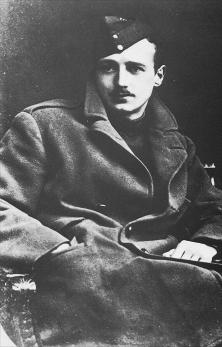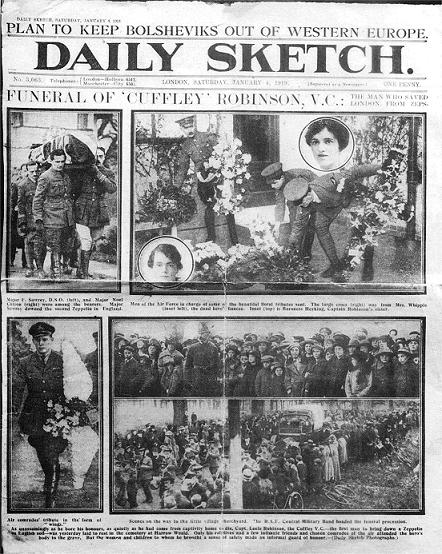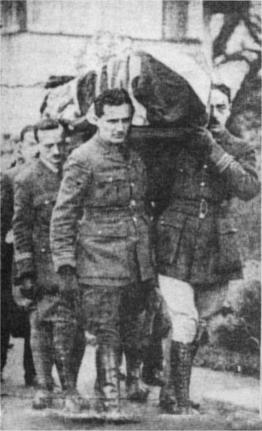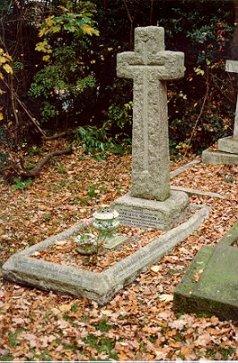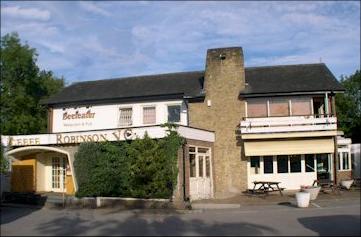Captain William Leefe Robinson, V.C. - Dies of influenza
Robinson survived the war, but was weakened by lack of food and mistreatment as a prisoner of war. By the time the Armistice was declared (November 1918) Karl Niemeyer, the POW camp Commandant at Holzminden POW Camp, very nearly succeeded in breaking him. In his less than healthy state, Robinson succumbed to the infection on Tuesday, 31st Dec 1918. His condition quickly deteriorated. England mourned the passing of one of the war's most popular heroes and hundreds attended the funeral which took place at Harrow Weald on Friday 3 January 1919. |
Photo of Robinson (Dec. 1918) |
Daily Sketch (London, 4th January 1919) |
The procession set out from Lavender Cottage, the house where William had spent his last days. A flight of aircraft, led by Brigadier Higgins, the Commander of the South East Home Defence Squadrons during 1916, flew overhead, and a large wreath was dropped before the house. It was placed, along with some of the hundreds of other tributes, on the coffin. The procession made its way up the Uxbridge Road to the tiny Harrow Weald cemetery by All Saints church, the Central Band of the R.A.F., the coffin borne on an Air Force trailer, officers of the Home Defence Squadrons, contingents of men from Hounslow and Northolt, and the lines of silent mourners. The muffled bells of All Saints rang out 720 'Grandsire Doubles,' and Sergeant Major Murrell, Chief R.A.F. trumpeter, sounded the last post.
The following was printed on the bottom of the front page of the Daily Sketch on the 4th January 1919: "As unassumingly as he bore his honour, as quietly as he had come from captivity home to die, Capt. Leefe Robinson, the Cuffley V.C. - the first man to bring down a Zeppelin on English soil - was yesterday laid to rest in the cemetery of Harrow Weald. Only his relatives and a few intimate friends and chosen comrades of the air attended the hero's body to the grave. But the women and children to whom he brought a sense of satety made an informal guard of honour." |
Major Fred Sowrey, D.S.O. (left) and |
A stone border was placed round the grave, the epitaph read; |
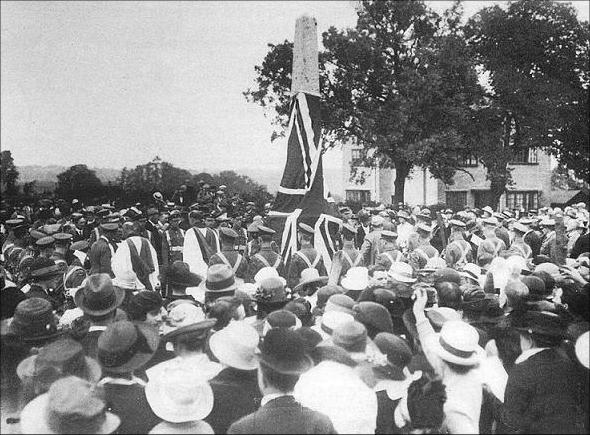
The unveiling of the Robinson memorial at Cuffley on the 9th June 1921
Leefe Robinson V.C., Uxbridge Rd., Harrow Weald |
A memorial stone was erected at East Ridgeway, Cuffley, close to the spot where the SL11 was bought down. The Rt. Hon. F. E. Guest, D.S.O. M.O. unveiled the "Daily Express" memorial to Captain Leefe Robinson V.C. on the 9th June 1921. As a lasting tribute to this war hero, a small restaurant on the Uxbridge Road, Harrow Weald, opposite his resting place (All Saints church cemetery) was named the LEEFE ROBINSON. Over the years, the building was transformed from the original 'tin shack' into a high class silver service restaurant. Having first opened on 21st June 1954, a fire destroyed the building in 1962. It was rebuilt as a Berni Inn, then due to the great success it was then enlarged twice in the 1970's. Whitbread plc took over control of Berni Restaurants in 1990 and re-opened the newly named LEEFE ROBINSON VC as the very first Berni to Beefeater conversion in May 1991. |

